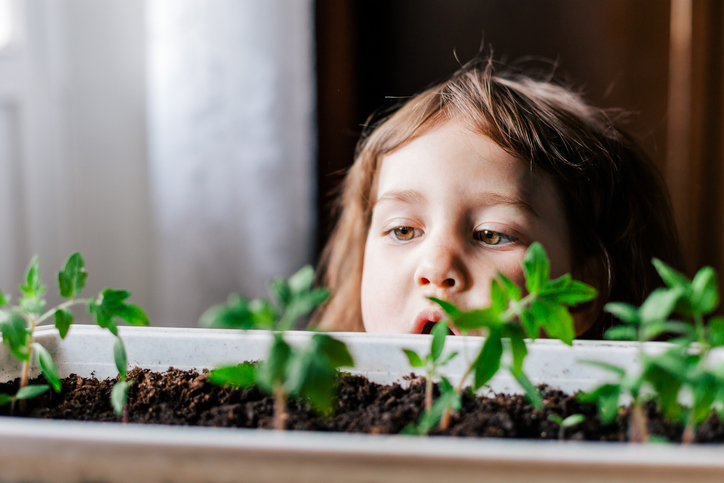What a year! We have chatted about fruits and vegetables, home gardens, farmers’ markets, holiday leftovers, and making your own food-related presents. I have given you directions, book resources, dancing videos, and hopefully a smile to share with your family and friends. Also, there were fun reading options and activities to help you and your children “make the healthy choice the easy choice.” I am glad you have returned to visit me here as we face 2022 together. It is going to be a great year full of possibilities! To begin, let’s take a deep breath to appreciate what last year has given us and what we can do moving forward in our health. Inhale through your nose and gently exhale through your mouth. There, do you feel that little island of peace? Maybe, we need to take a second breath to really appreciate the good we all have every day. Ready? In and out. Let go of dwelling on the past and stop worrying about what will happen in the future. Just be in this moment with another deep breath. This practice is called mindfulness. It is easy to begin but will take some time for it to become a habit.

Tell Me More About Mindfulness
In mindfulness, you are using all your senses to become aware of your current moment- you make time to breathe, you listen, you feel inside and out, and notice details of all your senses. This allows you to live in the moment. And while taking a census of yourself, you acknowledge your thoughts and feelings without any judgment or worry. This type of quiet thought is also a form of meditation. Even just five minutes a day will make a difference in your mind, body, and health.
Mindful eating means being fully focused on your food and eating with all your senses. For children, it allows them to appreciate the experience of eating. But for all involved, it helps us to be in the moment of the meal as we take one slow bite at a time.
Benefits of Mindful Eating
Overall mindfulness, provides many benefits:
- Reduces feelings of anxiety and stress
- Increases feelings of calm and relaxation
- Improves self-confidence and self-esteem
- Boosts energy and sense of well-being
- Develops more compassion and a longer attention span
- Aids in better sleep, immunity, and pain relief
Mindful eating will allow parents and children:
- To develop a deeper connection with food
- To create a lifelong practice of healthy eating habits
- To recognize feelings of hunger and fullness
- To have better digestion
- To fully enjoy all meals and snacks

Mindful Eating for Adults
Food should be savored by the mind just as much as by the body. The best way to do this is to sit down to eat, slow down the chewing and swallowing process, and savor the flavor of each of the foods on your plate. Quite often, many families are juggling work, play, and extracurricular activities that can disrupt our schedules and eating patterns. We find ourselves at times eating in the living room in front of the TV screen. It takes our brains 20 minutes to register the feeling of being full. This could lead us to eat beyond the point of being full. Slow down this process by appreciating your plate of food before you begin to eat and assess each bite as go. Does the third bite taste as good as the first bite? Focus attention and awareness on nourishment in the present moment. Putting your fork down between each bite will aid in this focus activity.
Mindful Eating for Children
When introducing mindful eating with children, use this game to show children how to appreciate their food:
- Have your child pick an item off their plate
- Have them look at the item and describe the color, shape, the size
- Have them use their fingers to describe how it feels-the temperature and the texture
- Have them sniff the food what does it smell like?
- Have them take a little lick-notice how your body is reacting
- Have them take a small bite-does it taste like the lick or better?
- Make sure they chew slowly
- Finally, have them swallow-how does that feel, and is the taste the same as when they simply licked the food?

Other ways of being mindful while eating with your family are to have intentional dinner conversations, involve your child in food selection, shopping, and food preparations, and aim to have meals together. Eliminate distractions by turning off your TV and shutting down electronics. Dinner conversations can be anything from talking about your day to what their favorite foods are. What is most important is that everyone listens and participates. You will notice your focus is on family rather than other distractions. By incorporating children in the shopping and preparing processes, they will see the effort that goes into a meal and further understand its value in it. Sometimes it lends children to try new foods more willingly, especially if it is something they were allowed to pick out at the store. Lastly, children watch adults and will do as they do. Varying food choices will instill in them a love of all types of food!
Quick Tips for Mindful Eating
You will need to find out what works best for your family at dinnertime, but here are some simple tips to assist in your process:
- Put away all electronics, phones, and distracting screens
- Eat at least one meal as a family at the table
- Begin the meal with a deep breath and a moment of thankfulness
- Allow children to serve themselves as they learn about serving sizes
- Use chopsticks or hold the fork in your non-dominant hand
- Close your eyes while chewing
- Chew with your front teeth, the left side of your mouth, and the right side of your mouth
- Create special meal traditions- holiday dishes or birthday desserts
- Grow your own fruits, vegetables, or herbs and spices

The above suggestions will open up your child’s mind to their connections with their food, their growing bodies, and making healthy choices throughout their lives. Practicing mindful eating will help children become self-selectors of healthy food options. Overall, the goal is to eat a variety of foods and look to the colors of the rainbow for fruits and vegetables, try more whole grains, enjoy healthy proteins, and choose low-fat milk and water over sugary drinks. Having a healthy relationship with food will lead to a lifetime of “making the healthy choice, the easy choice.”
Mindful Eating Resources
Beyond this blog, there are many resources about mindful eating, from apps to videos. help keep you on track. Included below are some books to read with your children to assist with introducing the topic of mindful eating and easing the practice into your daily routine.
- I Hear a Pickle, by Rachel Isadora, 2016, Ages 2-5 years
- Meditate with Me: A Step-by-Step Mindfulness Journey, by Miriam Gates, 2017, Ages 2-12 yrs.
- Good Enough to Eat, by Lizzy Rockwell, 1998, Ages 4-8 years
- No Ordinary Apple: A Story About Eating Mindfully, 2013, Ages 4-10 years
- Just Breathe: Meditation, Mindfulness, Movement & More, by Mallika Chopra, Ages 8-12 years
Be present in the moment with food!




